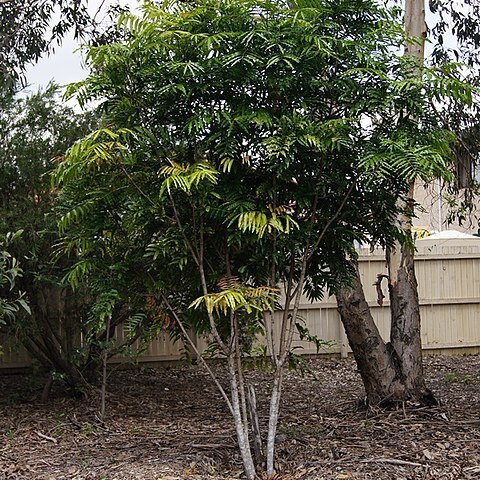A tree up to 30 m high. It spreads 6-8 m wide. The young shoots are sticky and bright red. The leaves are compound. The leaflets are alternate and along the stalk and have wavy edges. The leaflets occur as 8-16 leaflets which are 6-15 cm long by 2-4 cm wide. The leaflets can have fine teeth along the edge. The flowers are small and white. The fruit are 2-4 cm across. They hang in bunches. They can be in the axils of leaves or at the ends of branches. The aril or layer around the seed is edible.


